Art & Disability
24 year-old Becky Dann has kyphoscoliosis – a severe curvature of the spine. She was diagnosed at the age of four and became a wheelchair-user from the age of nine. She was subsequently bullied at school for her physical appearance.
You may recognise Becky as one of the participants from series 8 of the hit Channel 4 television show, The Undateables. But what you may not know is that she is also an accomplised artist.
As someone who has studied art throughout school and at undergraduate level myself, I thought it would be interesting to chat with Becky about her striking photography series, ‘I’m Fine’, and her work with Shape Arts, London.
1. Can you tell us about your photography project entitled, ‘I’m Fine’?
‘I’m Fine’ is a project that started in my second year of university. For most of my childhood, I was told I was different (due to my disability) and I didn’t understand it because I felt just like everyone else. University was when I really started to accept myself and how I looked. It was also the time when I started to realise that it wasn’t okay that I was constantly treated differently instead of an equal.
The project originally started with a research and development period, which looked at dating with a disability. As someone who started out very much hiding my disability online, I then explored why I did this and what the outcome was once I told someone. I then looked at the difference in dating online when my disability was put out there publicly from the outset.
As time went on I started to realise that looking deeper into things, I wanted to use this project as a ‘self-exploration’ project as well as a ‘challenging perceptions’ project. I was okay with how I looked – I wanted others to know that I’m okay and that people shouldn’t see me differently.
I decided to take some self-portraits in the studio as I wanted to show myself with my scoliosis on show as if to say, ‘this is me, I’m fine’.
Over the second and third year of university, I really explored this concept deeper and decided to develop the self-portraits into a live art piece. I wanted an audience and I wanted to challenge how comfortable they were around someone with a ‘different’ body. So, I advertised around my university – it was explained to audience members that the piece was a participatory piece whereby they were invited to paint a handprint and place it somewhere on my body, wherever they felt comfortable. Of course I kept my modest areas covered so people couldn’t take advantage, but I left my back clear.
It was really interesting because I was effectively a ‘statue’ and couldn’t talk. People were told to put the handprint anywhere on my body, but they continued to try and ask me where was acceptable. At one point I heard someone say, “There’s nowhere left”, though I knew full well that my back had not been touched. It wasn’t until one confident person put a handprint on my back that suddenly everyone realised it was okay.
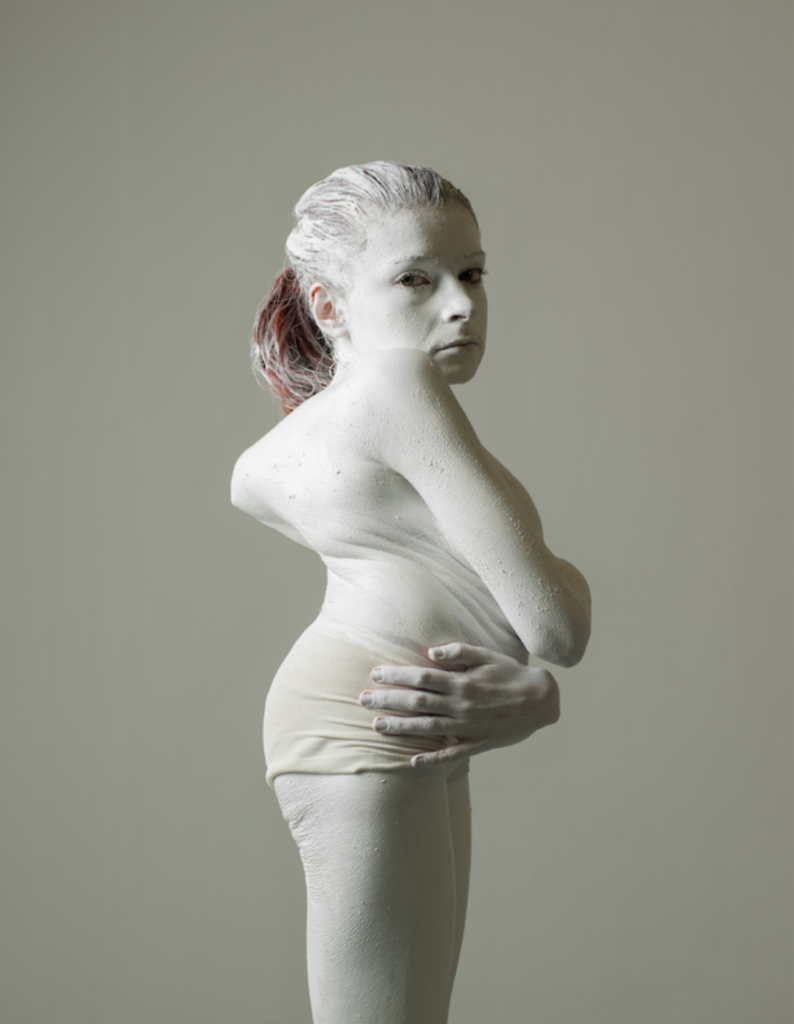
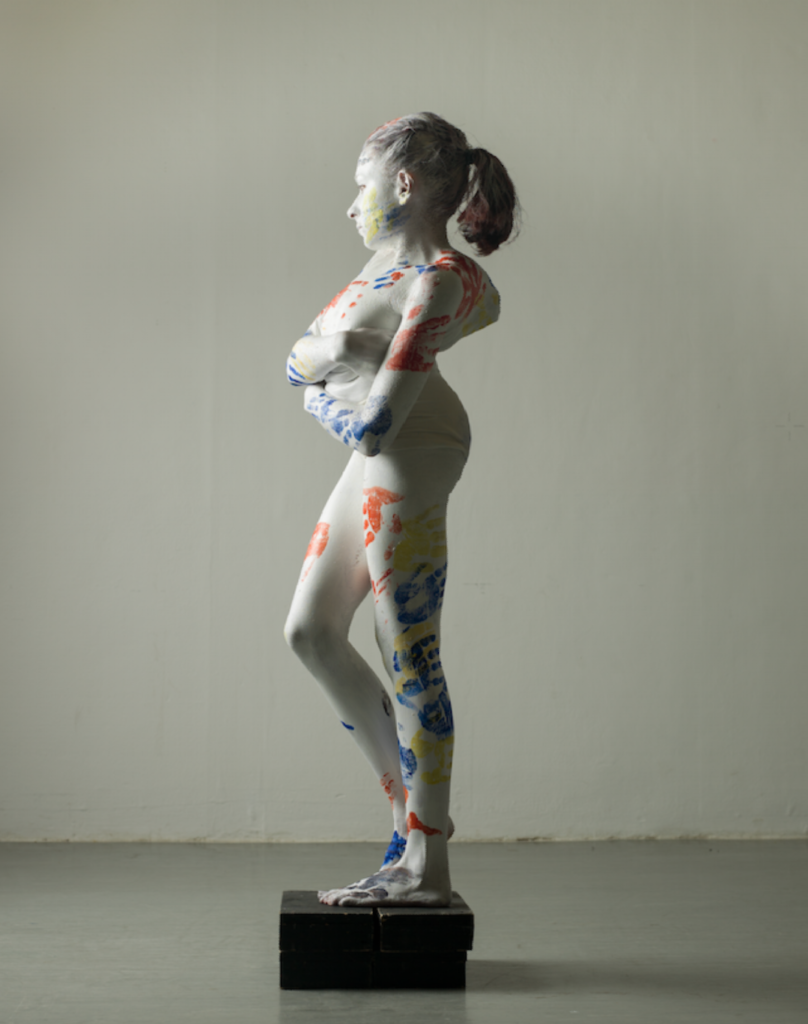
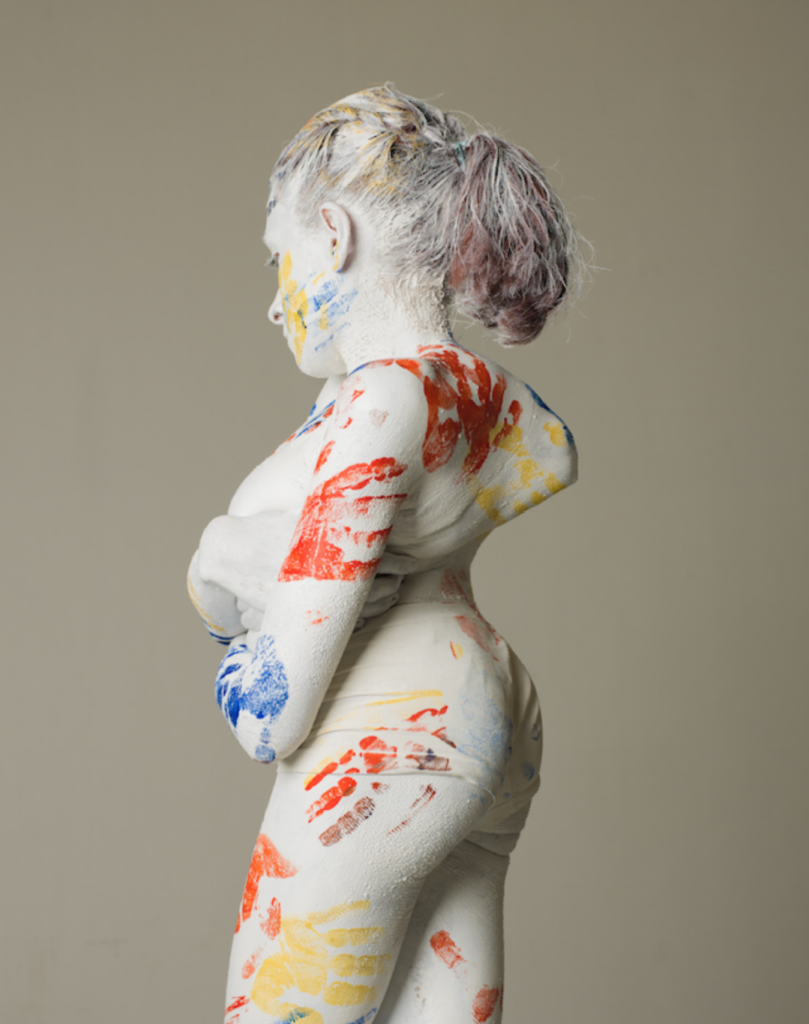
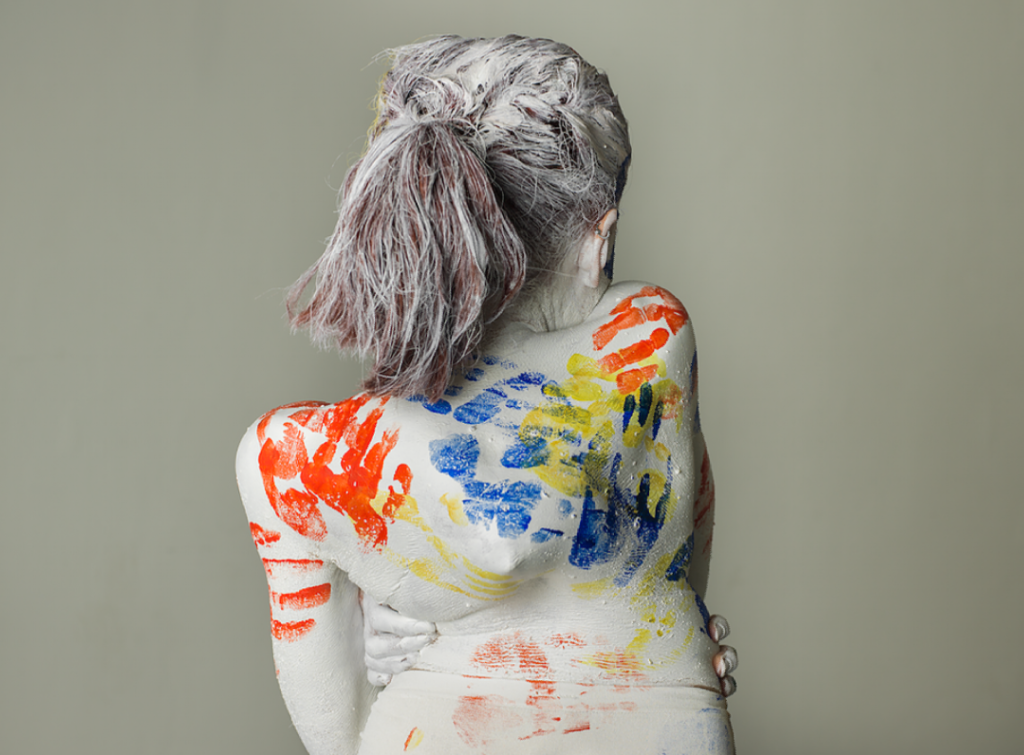
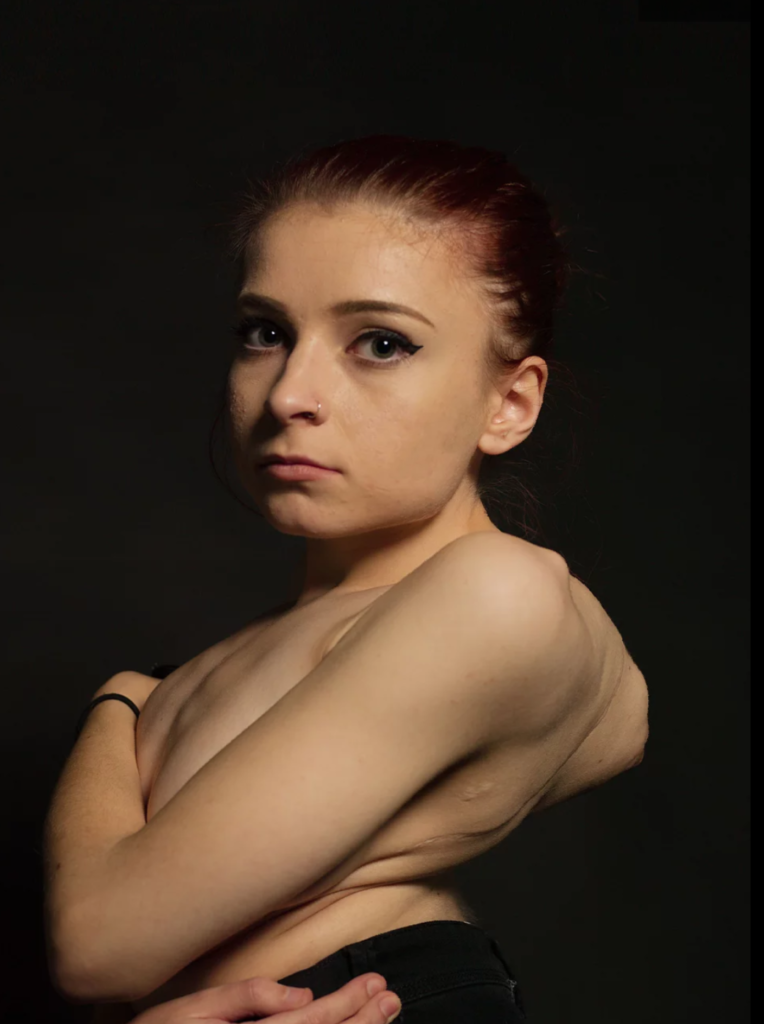

2. How was your university experience (in terms of inclusivity and being a student with a physical disability)?
When I first started university (the University for the Creative Arts in Farnham, Surrey) I was a full time wheelchair user with no clue what I was entitled to and I didn’t even know I was dyslexic. I remember first viewing my accommodation and quickly picking up on the fact that they seemed to put all disabled people together in one building, which was incredibly segratory.
I struggled to start with because I started to realise that a lot of my curriculum involved doing outdoor photography shoots, and I wasn’t sure how to do this without help – I couldn’t physically carry everything. I eventually asked for help and was pointed to our student services, where I was soon set up with a support worker which became really helpful to me.
In school, I had always struggled to retain information and although this was passed off without concern or investigation, I knew something wasn’t right. It wasn’t until I reached university that one of my tutors hinted that some students may want to go to student services for dyslexia support. I decided to seek help and see if that was the problem, and low and behold it turns out that I am in fact dyslexic! This meant I was given support with essays which became so useful since it really helped me to work to my full potential. I went from being a C/D grade student in my first year, to an A/B student in second and third year, eventually graduating with a First Class Honors degree.
I also gained enough movement in my legs during my second year, enabling me to start walking more with a crutch. Thankfully, my campus was so small and so going from campus to class was simple for me. It was great to finally feel independent.
Admittedly, I was really lucky at university as I had very supportive tutors around me, and I was there when DSA (Disabled Students’ Allowance) was in full force. But it was in my final year at university that I really started to notice how things needed to change for disabled students. Consequently, I ran for Disabled Students’ Officer in my Students’ Union elections, so that I could help represent my peers on campus. I won the election and helped make changes which was great. This then spurred me on to run for Campus President at my Students’ Union, where I was able to continue representing disabled students. I got to sit on boards within the university such as the Equality and Diversity board and the Inclusion board. I was able to speak out on behalf of disabled students, and help the university to become more inclusive. Furthermore, I was asked to speak at conferences with university staff about the importance of an inclusive education, and I was told by tutors who worked there that I’d made a real impact which meant a lot to me.
I was incredibly sad to say goodbye to my university, but I had the best years of my life there and I still speak to some of the staff!
3. What does your job at Shape Arts involve?
I work for an arts commissioning programme called Unlimited, which is run by Shape Arts and Artsadmin, two arts organisations in London. I am based at Shape Arts, an organisation working in the arts sector to improve access for and representation of disabled people, part of which is providing and sharing opportunities for disabled artists.
Unlimited commissions disabled artists to create their work. We have had some amazing artists such as Jess Thom from Touretteshero and Jackie Hagan too.
I am a trainee and have been working there just over a year. I am a key contact for a few of our artists, which means I am their point of call with anything regarding their commissions. When our current commissions are ready to tour, Southbank Centre has a festival at which some of our artists get to show their work. The next festival is 5 – 9 September 2018.
My role allows me the opportunity to do a lot of great things such as travelling to see different artworks, which I love. I recently went to Bristol and saw ‘The Nature of Why’ by Paraorchestra, another Unlimited commission at The Bristol Old Vic. I had already heard about Paraorchestra through working here, though I hadn’t seen any of their work and so I wasn’t entirely sure what to expect.
As someone who isn’t usually good with immersive art, I was kind of nervous when I found out that the performance was around the audience and that dancers could come up to you. But as soon as the musicians started singing and the music started, there was a sudden wave of emotion that came over me. I listened to the whole piece so intensely and I felt so much emotion that I ended up crying! It was amazing and made me feel incredibly happy. I really love my job!
🌟 All images courtesy of Becky Dann.
Follow Becky on social media:
Twitter: @BeckyDann
Instagram: BeckyDann
Website: rebeccadann.wixsite.com/photography
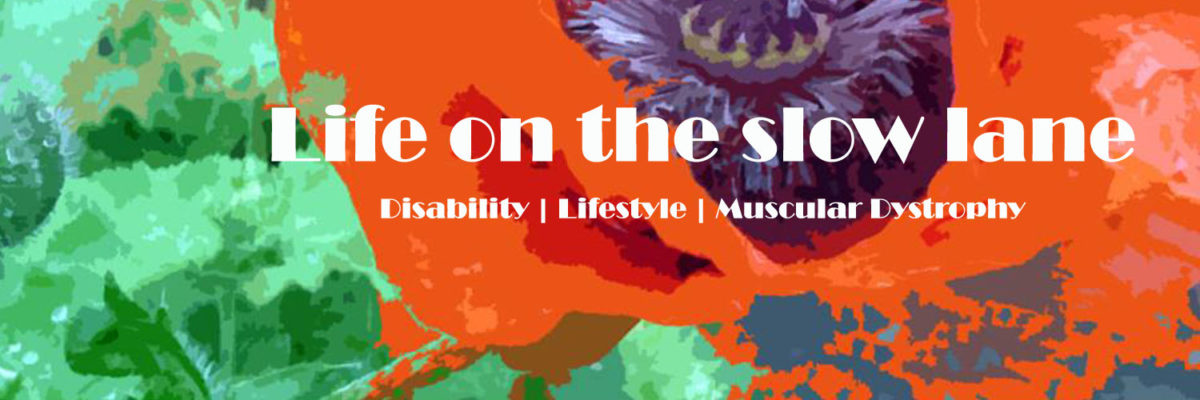

This is fascinating. My young daughter has scoliosis and, as a mum, I can’t help but wonder what the future will be like for her and what opportunities there may be (or not be)…
I love the artwork featured here and it really is great to be telling able-bodied people that it’s okay to treat disabled people as you’d treat anyone else (e.g. putting a hand on their back). As an able-bodied person myself, I think we are so worried about doing the wrong thing or offending that we just avoid doing anything – it’s not meant to segregate but it can come across as that. It’s great that you are breaking down those barriers.
And someone else really appreciated this post too because they chose to add it to the BlogCrush linky. Hurray! Feel free to pop over and grab your “I’ve been featured” blog badge 🙂 #blogcrush